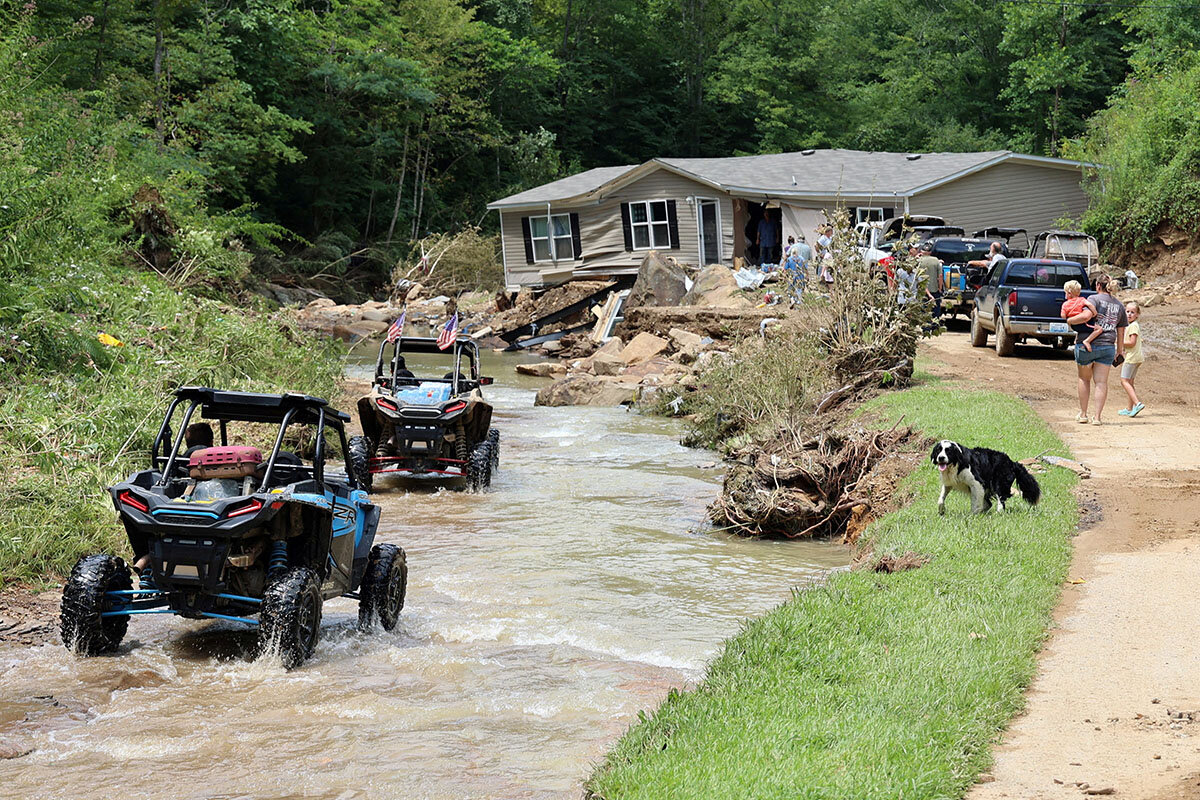In wake of flash floods, lessons that ripple beyond Kentucky

 Mark Trumbull
Mark Trumbull
First came courage. When massive rains struck eastern Kentucky, residents of the mountain region did what they could to keep themselves and their families above the rising waters. Sometimes they clung to trees or climbed onto rooftops. This was the same weather system that also caused flash floods in St. Louis days earlier.
Rescuers used helicopters to reach Kentuckians because there was no other way to navigate the flood-swollen terrain. By Monday first responders had rescued more than 1,400 people, even as reported deaths rose above three dozen and many people remain missing. Helpers came from both in and out of state.
The disaster also points to longer-run questions of safety and responsibility at a time of changing risks. So-called 1,000-year floods have been happening for, well, thousands of years. But as human activity boosts the concentration of heat-trapping gasses like carbon dioxide in the atmosphere, scientists say that extreme weather events will grow more frequent and severe.
This will call for fresh thinking: Wisdom and preparedness by individuals and families; adaptation and compassionate disaster-relief strategies by governments; efforts to keep insurance both affordable for policyholders and manageable for insurance companies.
In places like St. Louis the need may be for more robust stormwater management systems, says Leonard Shabman, senior fellow at Resources for the Future, an environmental research group in Washington.
In some coastal communities, the need may be for “managed retreat” from rising seas. And the federal flood insurance program, available to inland as well as coastal dwellers, is undergoing a rethink for a new era.
In the hollows of eastern Kentucky, the answers may not be so clear. The simplest truth is that an unusually severe flood has occurred, and it calls for a compassionate response from government, nonprofits, and neighbors alike.
“Right now what we’re wrestling with is the reality ... that most of the long-term victims of flooding and storm damage are low-income households,” Mr. Shabman says.



